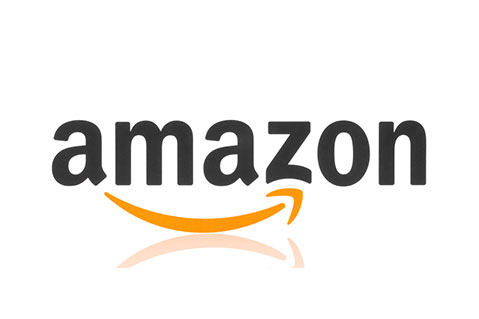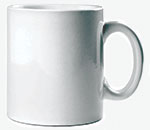Awards March 08, 2017
Promo Product Industry and 'The Amazon Effect'
With rush requests now the norm, can suppliers and distributors keep up?
Not that long ago, getting an order of promotional products from PO to completed delivery often took two weeks or more. That’s just the way it was. Emailed proofs and virtual spec samples hadn’t quite caught on yet, camera-ready artwork still needed to be mailed to suppliers, and every quick turnaround required a rush fee.

But clearly times have changed. In the past few years, requested order turnaround times have narrowed to the quickest in industry history. Counselor State of the Industry data shows roughly 40% of distributors are commonly seeing requested turnarounds of five days or fewer, and some suppliers are fielding a huge rise in overnight to two-day turnarounds.
“We had triple the amount of rush requests in one month,” says Nathan Robson, director of promotional sales at Raining Rose (asi/80489). “Just over the last 12 months, we’re seeing significant spikes. Our average turnaround time is 48 hours on a rush. Right now our standard turnaround time is three days. We’re pretty much getting close to ‘can’t go any faster.’ But we are seeing more and more 24-hour requests as well.”
>>Don't miss! Are drones the future of deliveries?
Keisha Tompkin, director of operations at distributor Bankers Advertising (asi/131650), has seen a similar increase – even in orders where the rush isn’t actually needed.
“Over the past few years rush production seems to have become the norm,” she says. “So many suppliers offer it that customers and salespeople often request the quick turn or 24-hour service, even in cases where it is not required to meet an event date. Many have started to view it as standard production instead of an option to use only when absolutely necessary.”
The Amazon Effect
What’s the big reason for the need-it-now shift? Suppliers, like Robson, believe it all stems from Amazon. Buyers, he thinks, are so used to being an Amazon Prime customer that they expect that same level of prompt service in the B-to-B arena. Consumers are also moving to a more self-service style of working. They’re more than happy to go onto a website, design their logo, upload it, and submit it all online at their own pace – without any desire to interface with customer service or sales, or wait for a company to put the wheels in motion for them.
Although many distributors and suppliers can and do meet these short timeframes, it’s definitely not without roadblocks. Customers often want to see a proof before the order even goes into production, but that can add an extra day or more to prepare it and wait for customer approval.
Artwork just to get the proof can be a concern as well. Mary Dobsch, owner of The Chest (asi/44830), says it’s like pulling teeth. Customers take their time preparing it, getting it approved, submitting it to the distributor – they don’t realize that nothing can move forward without artwork, even if they sent in an order weeks earlier.
Another major issue, Tompkin says, is that often both customers and salespeople don’t understand the process or what steps are needed to get an order produced and shipped. “We see requests for same-day or next-day production, but the time required to process the order, make the screens and print the goods often doesn’t allow for that,” she says. “In some cases it may lead to poor quality imprints or issues during packing and shipping.”
Errors tend to happen more frequently on rush orders – from incorrect artwork to a missed check causing things like text typos to bad imprints – because people are working at a faster than normal pace. Every error along the way slows production time.
Location can also be a problem. Carol DeVille, president of Canada-based The Branding Company (asi/145018), has a few customers in the Canadian oil fields – but only a few services ship there. If any of those customers try to place a rush order, they’re setting themselves up for failure, DeVille says.
AZ-based distributor Prickly Pear has a challenge it routinely faces: it can take up to five business days for products to be shipped in from a supplier on the East Coast. But that’s not the biggest problem Prickly Pear deals with. Owner Toby Mann says that most order issues result from suppliers not keeping inventory anymore. She says about 50% of her vendors don’t carry as much in stock as they once did.
“This is the first time I’ve really seen this come up, just in the last three years,” Mann says. “We have to be very careful in promising our clients anything until we speak directly with the vendor to make sure they have the items in stock. People just don’t want inventory, not knowing where and when it’s going to sell. That’s an extra step we’ve had to initiate in our company in order to get the product to our client in time.”
Dobsch puts much of the financial challenges in short turnarounds squarely on the shoulders of customers. She says that many seem to want to hold their money until the very last minute, setting the whole process behind for both suppliers and distributors. “The customers are insisting on hanging onto their money and then they want it instantaneously,” she says.
Ideas & Solutions
Despite the ballooning list of speed-related issues, there are certainly solutions to these complications. It’s possible to shrink the order process and delivery cycle – it just takes a bit of extra planning. Nancy Gudekunst, owner at MARCO Ideas Unlimited, has had to make a few process changes in her business in order to accommodate the requests. Like other distributors, she’s developed a partnership with several trusted suppliers, ones she knows will respect her company and she can respect theirs.
She’s culled such a good relationship with them that at this point, she can send rough POs directly to the manufacturer just to get the orders started in advance. She only does it sparingly though, because it requires cutting out interoffice staff that check customer orders to make sure everything looks perfect. But even before sending over the PO, she gets on the phone with the supplier to make sure everything is in stock and the production time can be met. She gets it in writing to share with her client, too; that way no one ends up disappointed and all expectations are out there from the start.
DeVille runs a similar type of operation. She works on orders with a “supplier pool” – a group of suppliers that she knows can accommodate what she needs in a short timeframe. She provides those options to her customers, who then pick from within the pool.
Joe Adamski, a senior manager in the Strategy and Top Line Transformation practice of A.T. Kearney, a global strategy and management consulting firm, encourages distributors to bring these types of partnerships to their websites, while also guiding the order process online to help customers find what they want in a realistic timeframe.
“You want to have a high-quality website that allows people to put in the design they need, but also pushes them in the direction you want them to go in terms of what you know you’re able to produce quickly,” he says. “Highlight any kind of breakpoints in quantity, where you can get customers something now based on the amount. Are there particular clients or items you can feature on the website in order to allow people to get their products faster?”
That means giving preference to nearby suppliers, ones that manufacture and ship from a location close to the customer. Both Robson and Dobsch note that because their items are produced locally, it allows them to streamline the process for every order. They don’t have to wait for supplies to come in, or for something to get through customs because it’s made overseas – and that makes everything easier and quicker for them and for the distributor waiting for product to ship.
“At the end of the day, there’s always a trade off between the cost of producing something and the time it takes to be able to produce it,” Adamski says. “There’s a balance there. You have to play the scenarios forward and do the risk assessments in order to know the best place to produce your products. The closer you can move your product manufacturing to your customers, the easier it’s going to be.”
Overall though, the best way to decrease lead times and meet those tight turnarounds is simply increasing transparency. Ensure every salesperson and staff member knows the process and what to expect from each supplier or distributor. Get comfortable enough with clients to predict their ordering habits and needs. Know the products inside and out. Have every expectation set out up front.
“This way, the customer can receive the goods, the supplier can execute at the level you know they can, and you as the distributor can commit to making sure the process works as a one-step solution,” DeVille says. “Ensuring success for everybody means knowing the data up front.”
Speed Test
 Ever wonder how web-based, on-demand companies stack up to a true industry professional? For a session at the 2016 Power Summit, ASI staffers ordered mugs from Amazon, Café Press, Alibaba, Vistaprint, and an industry supplier. Here’s what we learned.
Ever wonder how web-based, on-demand companies stack up to a true industry professional? For a session at the 2016 Power Summit, ASI staffers ordered mugs from Amazon, Café Press, Alibaba, Vistaprint, and an industry supplier. Here’s what we learned.
- Shipping windows ranged from two to eight days, and every company delivered their product within the timeframe they laid out at the start.
- The promo industry supplier and Alibaba could not accommodate small orders. All others had a minimum order of one mug. The supplier’s minimum was 48, and Alibaba required one carton of 36.
- Alibaba could not imprint the mugs, and only shipped blank white ones. The majority of them arrived broken, as well, in a bubble wrapped box but with no internal support.
- Café Press, Amazon and Vistaprint were the most responsive with customer support.
- Café Press was the least expensive at $70.75. The industry supplier cost the most, at $211.90.
- The imprint, across the board, wasn’t the best quality. Café Press’ imprint was grainy, faded and on the wrong part of the mug. Amazon’s colors were faded, though all other aspects were acceptable. Vistaprint also produced a grainy and faded imprint, and the industry supplier’s imprint quality was inconsistent – some were crisp and others were grainy.
